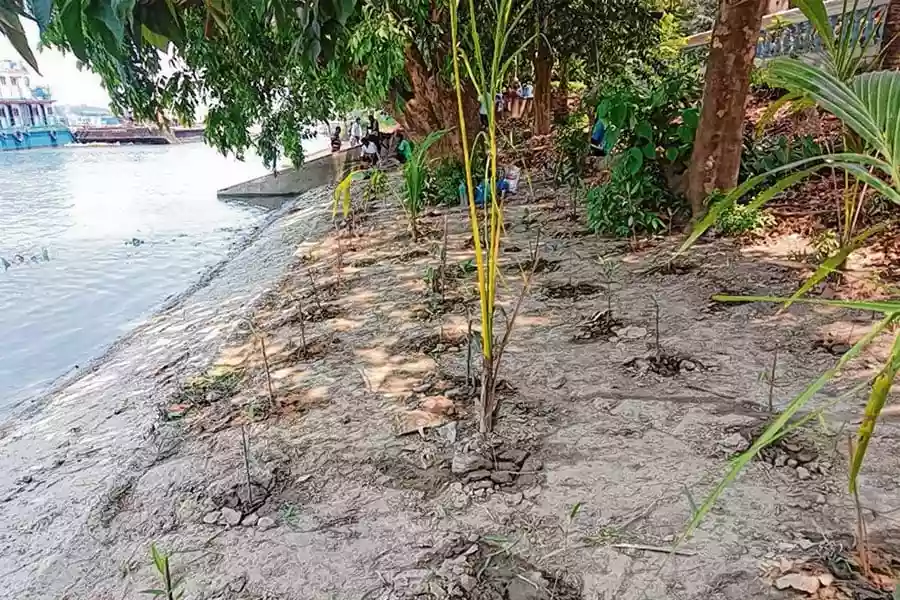.gif)
.gif)

In a bid to strengthen Kolkata’s natural defense against increasingly intense cyclones, the Kolkata Municipal Corporation (KMC) has taken a bold step—planting thousands of mangrove trees along the banks of the Ganges. The initiative is part of a larger effort to protect the city from disasters like Cyclone Amphan, which uprooted over 5,000 trees in 2020, and Remal, which brought down 300 more.
This green wall of resilience is being grown from Princep Ghat to the Second Hooghly Bridge, covering around five kilometers. Already, 750 mangrove saplings have been planted, and several thousand more are expected to follow. According to KMC’s botanist Sarbani Roy, the trees will soon mature into a natural barrier capable of mitigating the impact of high-speed winds and water surges.
Roy explained that mangrove trees are ideally suited for this role because of their dense, tangled root systems. These roots not only reduce the force of incoming water during cyclones or tidal waves but also help prevent soil erosion. Their adaptability to saline soil makes them a perfect fit for the banks of the Ganges.
What’s more, mangroves require minimal maintenance. Initially, they need to be watered twice a day, but this frequency can be reduced once they start growing. “Within a year, this green line will begin resembling a proper forest,” said Roy with optimism.
Renowned environmentalist Swati Nandi Chakraborty has praised the initiative. “Unlike tall trees that often get uprooted in storms, mangroves bend but don’t break. Their flexibility makes them naturally resistant to high winds. Plus, they support biodiversity by fostering algae and small aquatic life at their base,” she noted.